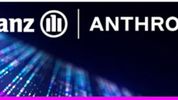Stephen Applebaum highlighted that in the US there are 14 OEM auto insurance programs now deployed. Toyota Insurance Management Solutions USA joins the growing list of vehicle manufacturers establishing auto insurance operations. In October, General Motors announced a $6 billion revenue goal for its OnStar Insurance product by 2030. Tesla launched auto insurance in California in 2019 and has since expanded to Texas.For now Tesla is licensed as a broker in the US to conduct business on behalf of the State National Insurance Company Inc, a unit of Markel Corp MKL.N. In the UK Tesla partners with DLG.
BMW has partnered with Wrisk in the UK to offer embedded insurance and if insurance is indeed a data driven business who has the greatest power to monetise data? Auto OEMs or Carriers?
The promise from Musk is that the superior data Tesla gains from its vehicles will make a big difference.
"Tesla hopes to use its crash data not only to improve their insurance operations but also to learn how to adjust their car designs for less expensive repairs in the future. On the call, Musk said it was, “very helpful for us to have a feedback loop to see what is driving insurance expense.” Seeing collision repair costs of $15,000 is “crazy,” he said, and emphasized that the feedback loop from the insurance data back to the design and manufacturing teams was invaluable. "
Elizabeth Bart Milliman Sep 2020.
Tesla might have superior data on from its vehicle software including the Tesla driver behaviour. But there is far more to insurance than just the vehicle and driver. Third party involvement and liability, personal injury and in countries like the UK the trials and tribulations of credit hire. That is where the carrier has a distinct edge.
And insurance for Tesla vehicles is complicated by the different State Laws in the USA hence only being currently available in a few States. Never mind considering the global market and the differing regulatory regimes in each country.
Other auto manufacturers partner with insurers like GM/OnStar in the USA. eCall is an automated instigator of FNOL at times of collision/road traffic accident and OnStar's customer service centres triage support from the emergency services and roadside assistance partners. ECall is, of course, only deployed on newer vehicles so there is a growing market for apps on smartphones from the likes of The Floow, Sfara, TRAK etc. for drivers of older vehicles without eCall.
But again the insurance aspect, much hyped, is no more than a partnership with a carrier. Not a potentially disruptive change. This focus is also coming from the viewpoint of the auto manufacturer and/or the carrier whilst the insurance is bought by the policy holder. They actually buy from
- Aggregators/price comparison websites
- Direct from traditional carriers
- Direct from full-stack insurtechs
- Indirect via brokers and MGAs
- At point of sale via auto manufacturers
Two- or three-car families usually have policies from different sources whilst certain carriers and insurtechs offer multi-vehicle policies. This complicates the picture. Omni-channel and different buying behaviour and motives.
So the question as to who will win the tech race is equally complicated. Carriers and insurtechs are investing time, money and resources in various platforms and software whilst auto manufacturers are doing the same. Auto manufacturers wish to keep customers within their own networks of body shops and repairers whilst carriers want to use their own repair networks. OEMs want a tied market for their own components and parts whilst the insurer wants the optimal mix of reclaimed, less expensive and quality parts.
The rising deployment of ADAS driver aids climb the ladder towards fully autonomous vehicles (AV) reaching level three today with level 5 (AV) a long way ahead with regulation being the probable delay to full implementation. Level 3 drivers aids are complicated enough making repair and replacement with resynchronisation of sensors etc a critical factor. Where does liability lie should that not be achieved satisfactorily? The carrier/insurtech, the repairer network or the auto manufacturer?
Technology is only a part of the challenge. As auto manufacturers, repair networks and carriers/insurtechs build out their 'ecosystems' each are moving into each others territory and core business models. It is beguiling to picture a Tesla vehicle in a collision leverage eCall to ensure drivers, passengers and third parties are all supported by police, ambulances and medics, the vehicle organises its own tow or transport to the network having ordered all the parts required which are printed at the repair shop ratter than waiting on delivery from a warehouse and so on.
At the moment it is hard enough to automate anything other than body damage using software like Audatex/Solera, Tractable, Xtract etc. But great progress is being made and these innovations and disruptive technologies will determine the future winners.
You can see a future where carriers must outcompete insurtechs to deliver the products and services customers want. Where claims management stays core to some carriers/insurtechs whilst others decide claims are not a core competence but should be outsourced.
And all the time the advance of ADAS beyond level three towards level five means insurance may change from driver or vehicle insurance to product liability insurance. For sure that is where Elon Musk sees the future and as the current internal combustion engine (ICE) champions of the world, Daimler, BMW, Honda, VW, GM move from their core strengths of metal bashing and component assembly to software they will fight that battle.
You do wonder if that is the stage when the digital masters of the world steal the crown and win the race! Amazon, Google, Apple and so on. They understand customers, logistics and virtual engagement. Carriers, insurtechs and auto manufacturers must hope that they can keep their crowns even as the digital tectonic plates move with accompanying earthquakes and tsunamis destroying and drowning rigid companies and ecosystems.
Finance, insurance, manufacturing, asset repair and replacement, robotaxis and autonomous trucks. Disruption and change will upend much of what we see and experience today. This provides advance warning of what carriers, insurtechs, manufacturers, mobility services providers and others must achieve in vision, strategy and pivoting if they are still to be around ten years from now.
Too many CEOs, C-Suites and leaders may hide behind apparent technology innovation and miss these major tipping points.
Further Reading
Motor insurer digital maturity, touchless auto claims and customer satisfaction
Data extraction, ingestion and sharing models for insurers
Swiss Re & Baidu partner on autonomous driving insurance
oyota Insurance Management Solutions (TIMS) has established its first branded product, Toyota Auto Insurance, designed to offer customers quality, customizable coverage at affordable rates. Toyota Auto Insurance is currently available in Arizona, Illinois, Indiana, Ohio and South Carolina, and will soon be offered in Georgia, Missouri, Tennessee and Texas. Future states will be added in the coming months.
https://collisionweek.com/2021/12/09/toyota-auto-insurance-launches-five-states/









